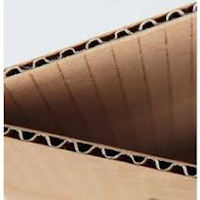.jpg)
You need:
- white drawing sheet A4 size
- watercolor paint
- brushes
- jar with water
- small and broad black marker
- colored construction paper for background
- glue
Ask students to take some flat dried leaves. Every student chooses one of his own leaves and outlines it several times with a pencil. Remember to draw not all the leaves in the same way on the paper, because they whirl down from the tree. Make sure some leaves go over the edge; these will later be finished on the background.
Paint the leaves with watercolor paint. Use water to dillute the paint less or more. Choose warm fall colors and try to make transitions in the colors by using wet in wet technique.
Paint the background blue. Use again the wet in wet technique, and/or choose for wet on dry. You don't have to paint exactly against the leaves, because they will be outlined later.
Leave the work to dry and paste in on a colored background. Outline the leaves with a thick black marker. Use a fine black marker for the veins, while observing carefully the real leaves. Don't stop with outlining and drawing veins when you reach the background, but go on with it there.
.jpg)
Works of arde made by students of grade 6.









.jpg)


.jpg)
.jpg)

.jpg)
.jpg)





.jpg)
.jpg)





























